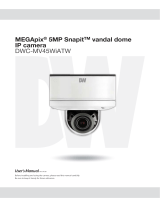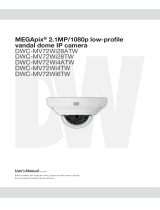Page is loading ...

NEW 230 V RAIN GAUGE
Electronic device for the detection of rain.
TECHNICAL DATA:
- Power supply : 230 V a/c 50-60 Hz 4,5 W max.
- Relay contact : N.A. 5 A 30 V d/c; 5 A 250 V a/c
- Operating temperature : -10 to 70°C
- Packaging dimensions: 240 x 185 x 110 mm.
- Container : PC + ABS UL 94V-0 (IP54)
TERMINAL BOARD CONNECTIONS:
CN1: INPUT
L : 230 V a/c line input (Phase).
N : 230 V a/c line input (Neutral).
CN2: OUTPUT
R : Relay contact (Normally Open)
R : Relay contact (Normally Open)
OPERATIONAL DATA:
The sensor essentially consists of a sensitive surface which is
able to detect the presence of water. In order to prevent
condensation from building up and to facilitate evaporation, this
surface is heated using an integrated heating element which is
activated as necessary. The heating of the sensitive surface
should therefore be considered normal. The condition of the
sensor is monitored through the activation of two LEDs:
Reference LED LED Off LED On
R HEAT Heating off Heating on
RAIN No precipitation Precipitation
detected
The output contact is activated depending on the information
detected by the sensor, in accordance with one of the modes
selected by the user though the SW1 dip switch:
Monostable Time 1 sec Time 3 min Time 12 hours
MONOSTABLE: the sensor is supplied in this mode by
default. The output contact is closed when rain begins to
fall and is opened when the surface of the sensor is dry.
TIME 1 SEC.: the output contact is closed when it begins
to rain and remains closed for 1 second. This mode may
be used, for example, when the rain sensor is connected
to a device which only requires a command message.
TIME 3 MIN.: the output contact is closed when it begins
to rain and remains closed for 3 minutes. This mode may
be used, for example, when the rain sensor is connected
to a device which requires a temporary command
message.
TIME 12 HOURS: the output contact is closed when it
begins to rain and remains closed for 12 hours from the
moment at which the rain started to fall. This mode may
be used, for example, when the rain sensor is connected
to an automated irrigation device.
CAUTION: the rain sensor begins to operate normally
approximately one minute after it has been connected to
the electricity network. This period of time enables the
sensor to reach the required temperature.
F
OR THE
U
SER
-
I
MPORTANT
- The device should not be used by children or by individuals
with reduced physical or psychological abilities unless
supervision is provided or instruction given on how to operate
it.
- Do not let children play with the device; keep radio controls
out of their reach.
- CAUTION: Keep this instruction manual in a safe place and
adhere to the important safety instructions contained within it.
Non-adherence to these instructions may lead to property
damage and serious accidents.
- Examine the system frequently to check for any signs of
damage. Do not use the device if it needs to be repaired.
- If the connection wires have to be replaced, please contact a
qualified technician only.
For the Installer – Important
- The New Rain gauge must be permanently connected to the
power supply network and is not equipped with any type of 230
V a/c electric line sectioning device. The installer is
responsible for installing a sectioning device in the system. An
omnipolar switch with overheating category III must be
installed. It must be positioned in such a way that it is
protected against accidental closures.
- For connections (power supply and outlet contact) we
recommend the use of flexible wires with an insulating sheath
in harmonised polychloroprene (H05RN-F). The wires should
have a minimum cross-section of 0.75 mm
2
.
Fasten the connection cables using the cable clamp
supplied with the product kit.
- Handle the sensor with care during the assembly process
and make sure that all components are properly assembled.
Pay particular attention to the ceramic plate and the flat
connection cable. When closing the box again, it must fold
back on itself normally.
- It is very important to establish an exact location so that the
product is exposed to rain.
- Make sure that the sensor remains tilted at approximately
45 degrees (Fixing area at the top, round end of the box at the
bottom).
- Fix the device to the wall using the screws and rawlplugs
supplied with the product, in the correct position (see figure
below, “Installing the Rain Gauge”).
- Do not paint or varnish the sensitive surface of the sensor.
- The dirt which accumulates on the surface of the sensor
restricts its sensitivity: we therefore recommend that it is
cleaned once or twice a year using a damp cloth, after the
electricity supply has been disconnected.
- All operations requiring the opening of the casing (such as
installation, programming and repair, etc.) must
be carried out by skilled professionals only.
- The control unit is not equipped with a sectioning device.
Therefore, installer is responsible for installing a sectioning
device in the system.
GB

The below product:
Electronic Control Unit:
LG 2201
Complies with the requirements of Directives
EMC 2004/108/EC, LVD 2006/95/EC.
Rev. 1.2 dated 12.04.07
INTERNAL CONNECTIONS OF THE RAIN GAUGE:
INSTALLING THE RAIN GAUGE:
/













